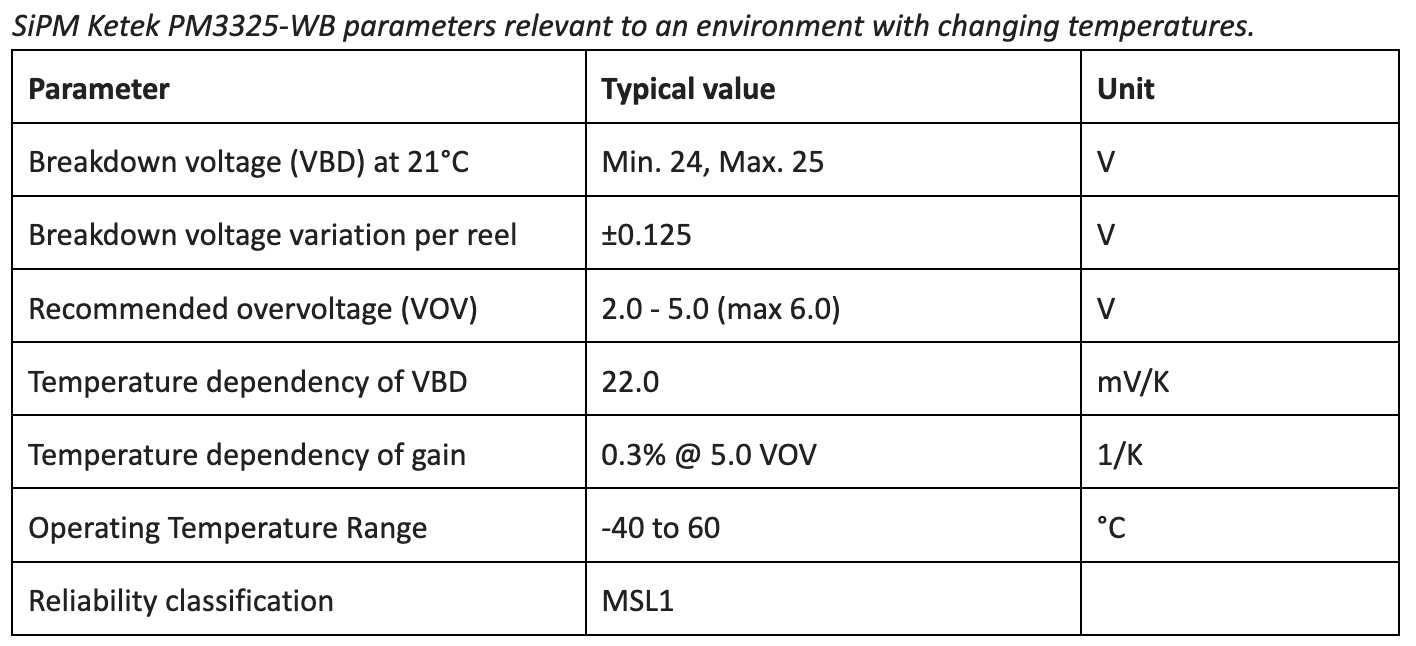Dec 29
With the CosmicPi hardware installed in a portable rugged case, read all about it in this post… it was necessary to carry out tests under similar conditions to those that these devices will experience during the Transglobal Car Expedition.
James’s freezer double-up as a sub-zero°C environmental chamber for these tests. Four CosmicPi units were installed in the freezer and operated overnight.
Watch James talk about the cold testing of four units.
The test results were disappointing. Only one of the four units was fully functional under those freezer conditions. The other three units failed.
Investigations are ongoing to determine which systems failed.
Several components and systems are sensitive to temperature changes.
The silicon photomultipliers (SiPM) in particular are highly sensitive to fluctuations in operating temperature. The operating voltage has to be adjusted, to keep a constant overvoltage above the temperature-dependent breakdown voltage. The gain and noise also change as a function of temperature.
There are two major parameters that are adjustable: the SiPM voltage (named “HV” in the firmware), and the threshold above which an SiPM signal is considered sufficiently above the noise level to be considered a valid signal for that SiPM (named “DAC” in the firmware).
The SiPM used in this design are the Ketek PM3325-WB. The available Ketek datasheet lists several parameters, the key ones relevant for an environment with changing temperatures are repeated in the table below.

An HV (high voltage) scan was carried out, for the voltage supplied to the SiPM, showing that the measured high voltage is stable and linear throughout the available firmware HV settings range, for both channels.

Over the maximum allowed temperature range of -40 to 60°C, the corresponding SiPM ΔV = 2.2 V. We generally set the operation voltage VOP = 30 V at room temperature, corresponding to an overvoltage of VOV = 5V, before fine-tuning. We can easily accommodate a swing from room temperature, either down to -40°C or up to 60°C, given that the voltage applied to the SiPMs can be set roughly between 25 and 35 V.
The HV scan test confirms that the electronics supplying the voltage to the SiPM is well tuned to cover the range of voltages required for the environments the CosmicPi units are likely to be subjected to.
From the plots reported earlier, a ΔV = 2.2 V corresponds to a change in firmware settings of 56 steps. So the setting of the operation voltage for the SiPM should be straightforward.
What is less straightforward is the setting of an appropriate DAC threshold, as the temperature changes, because even though we may correct for fluctuating breakdown voltages by setting a different HV value in the firmware, the noise from the device increases with increasing temperatures.
